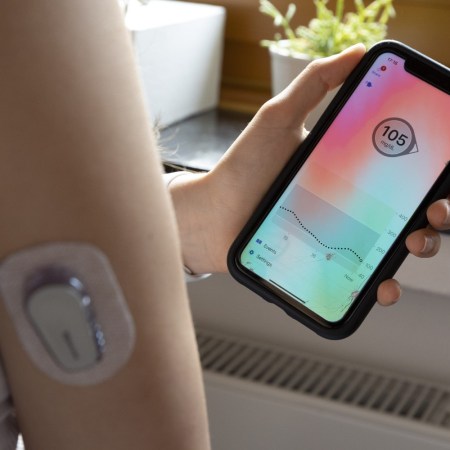According to my WHOOP data, it takes me 12 minutes on average to fall asleep.
When I first discovered that biomarker — which has an official name: sleep latency — I wasn’t particularly pumped. Aren’t there people who can conk out in two minutes or less? What was I doing wrong?
After all, the sooner you fall asleep, the sooner your very first non-rapid eye movement (NREM) sleep cycle starts, which guarantees you’ll spend some time in rapid eye movement sleep (REM). That’s the deepest and most restorative stage of sleep, where all the good stuff happens — your brain files away important memories, eases the soreness in your limbs and gives your immune system a much-needed boost, among other magical benefits.
All that said, a typical sleep latency actually falls between 10 and 20 minutes. If you’re clocking into that range, you don’t have anything to be worried about. Still, it’s understandable that certain sleepers out there are keen to optimize their sleep latency — and get as close that the golden, sub-two-minute figure as possible.
We explain where that number might’ve come from in the first place, and best practices for catching the early train to dreamland.
How to Ambush Your Morning Like an Aussie
A special edition of the “miracle morning,” from the country that does it bestU.S. Navy Flight School
During WWII, the United States Navy Pre-Flight School started training prospective pilots to fall asleep in two minutes or less — figuring a full night’s sleep was pretty critical when you’re operating a P-47 Thunderbolt in the morning. The method is pretty simple, and it’s possible you’ve been instructed to try some variation on it in the past.
Here’s how to do it: Relax your entire face, let your shoulders sink into the bed, rest your hands on either side of your body, release a steady stream of exhales from your chest and then let go tension of whichever muscles in the body still feel taut. Imagine a specific scene that brings you calm and if it keeps slipping away, simply murmur the words “don’t think” over and over again.
This method worked remarkably well for the pilots of the time; within two months they were using it to fall asleep in as little as 10 seconds. It didn’t matter how many explosions they could hear mere miles away. Give it a try, and if you’re looking for more nuance on the breathing section, WHOOP specifically recommends the “4-7-8” breathing exercise for its elite athletes. Find some of our other go-to breathing exercises here.
“10-3-2-1”
For some sleepers, these breathing exercises can feel pretty intimidating. What if they don’t work? What if you lose focus and get frustrated? Could that leave you more awake than if you’d just followed your normal routine?
It’s possible. Fortunately, a quicker sleep latency can be planned for before you’re literally laying there in bed. Sleep experts advocate for a lengthy and mindful wind-down routine, with decisions made in the name of better sleep as early as 10 hours before bedtime. Give the “10-3-2-1 method a look:
- 10 hours before bed: cut off caffeine
- 3 hours before bed: cut off eating
- 2 hours before bed: cut off work
- 1 hour before bed: cut off screens
One thing we really like about this formula is how reasonable/attainable it is. None of these suggestions require a heavy shift in lifestyle behavior. Most of us probably manage at least two of the four on a daily basis. But getting into the habit of observing all four of these principles will take a boatload of stress off of your bedtime, by subtly attuning your sleep-wake cycle hormones.
It might seem silly to some, the idea of “preparing for bed” around lunchtime. These approaches are things you’ve probably tried to include in your life anyway, though. No one wants to eat dinner while answering emails at 8 p.m. Observe these tenets, and you’ll be more prepared for sleep when the time finally arrives. As for supplemental boosts, you need to be careful not to get too reliant on any one product. But we feel comfortable recommending magnesium. Read our review here.
How to track it
And when it does, don’t sweat the whole two minutes-or-less thing. That’s nice — and will happen from time to time — but you’re more likely to score a crazy sleep latency when you’re in desperate need of it. It arrives whenever you’re in sleep debt, after a long week of work, travel or partying.
A 15-second sleep latency is essentially a clutch failsafe, which catalyzes a process known as “REM rebound” — all-hands-on-deck sleep, meant to get you back on schedule. But that sort of seesaw isn’t sustainable; ideally, your sleep latency stays relaxed and predictable. Sleep is one area where your performance metrics should be as boring as possible.
In order to track those metrics, it helps to have WHOOP or an Oura Ring to access exact figures. Apple Health is useful, too. It’s able to track the average amount of time you spend in bed, and the average amount of time you spend asleep, which should compliment your anecdotal observations on whether these adjustments are paying off.
The Charge will help you move better, think clearer and stay in the game longer. Subscribe to our wellness newsletter today.




















